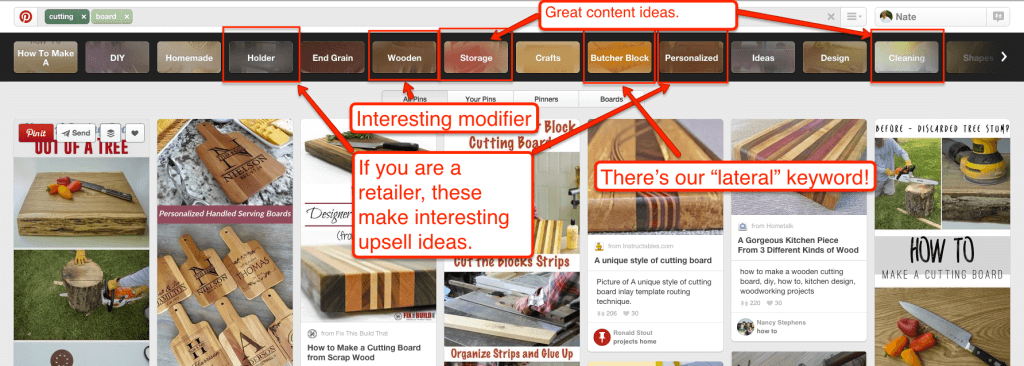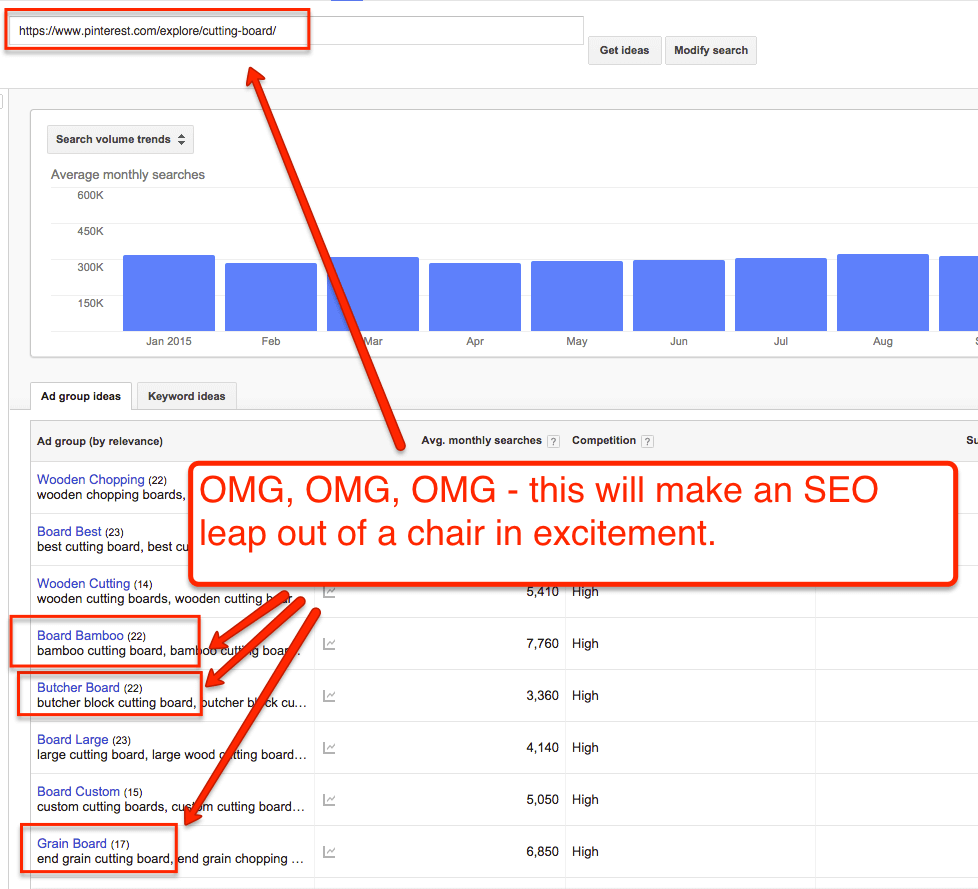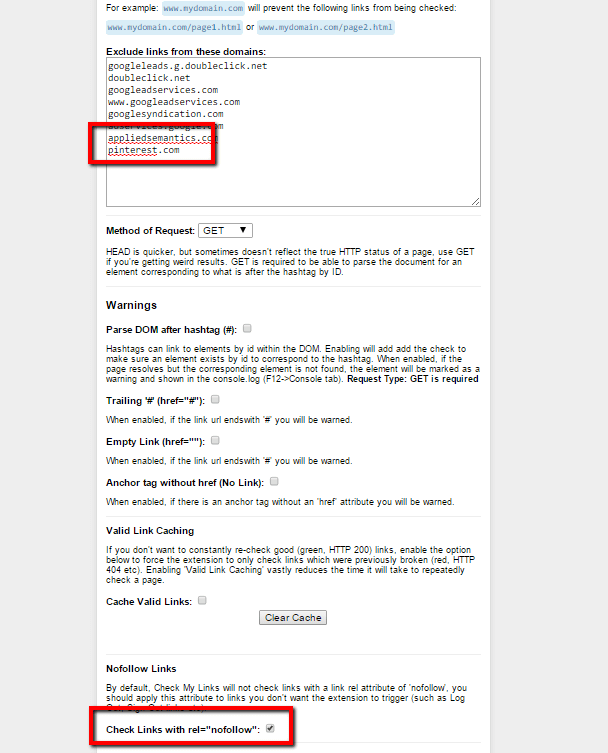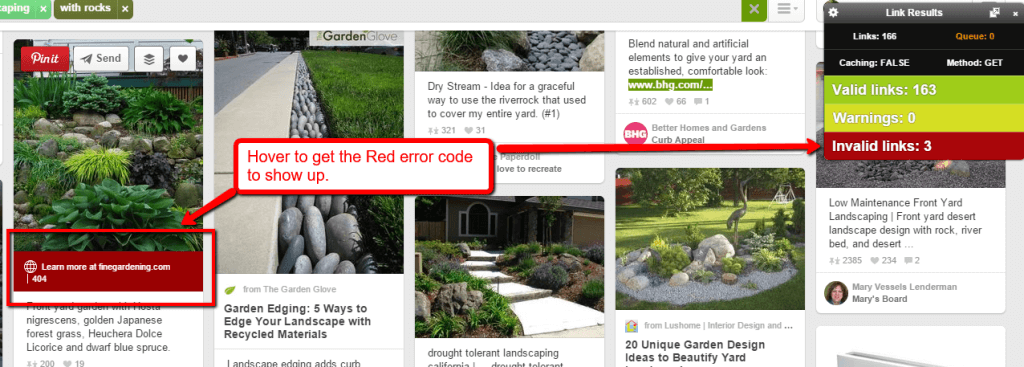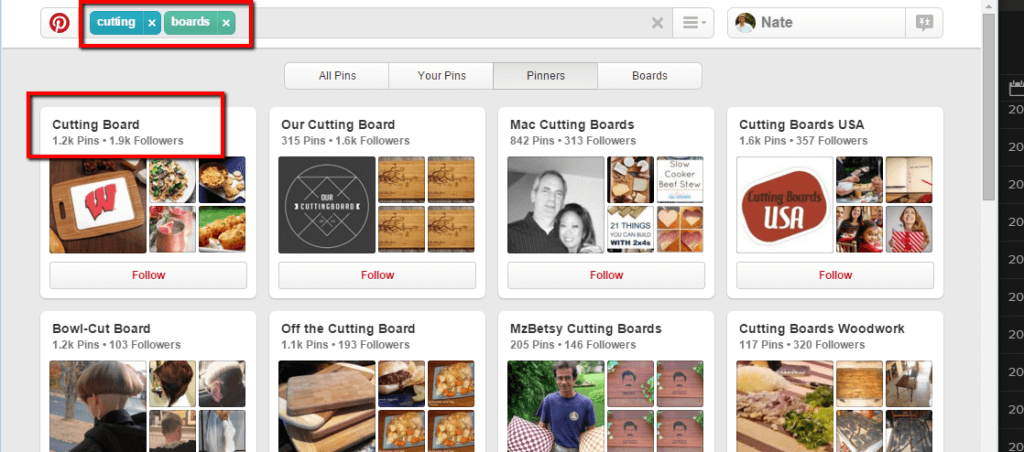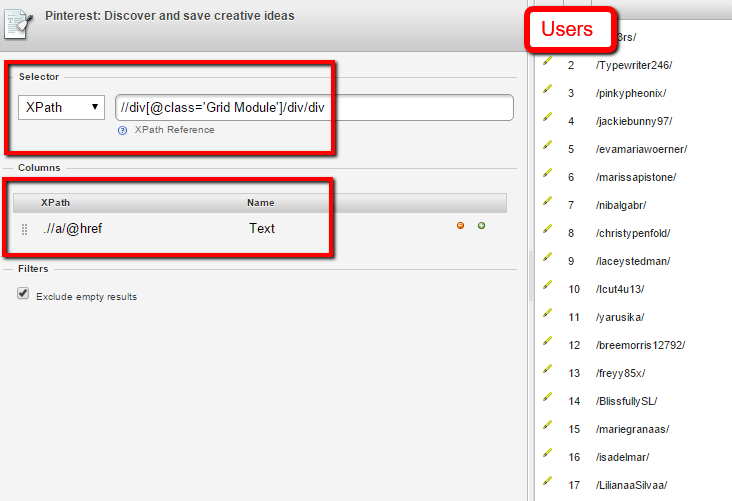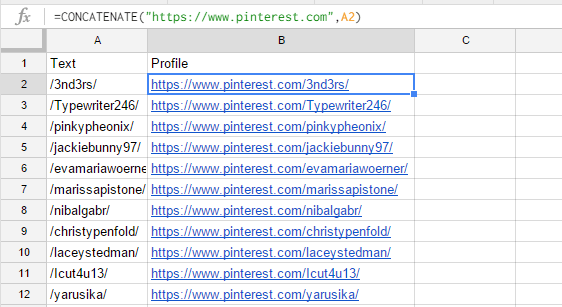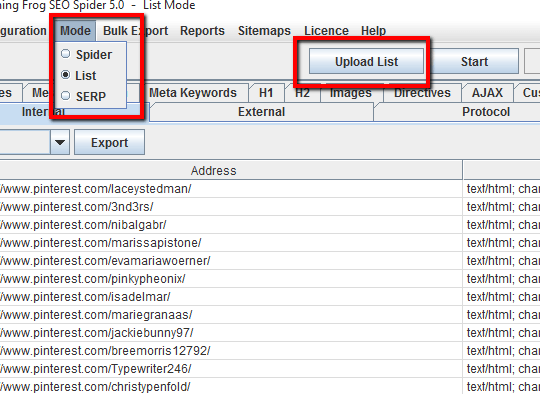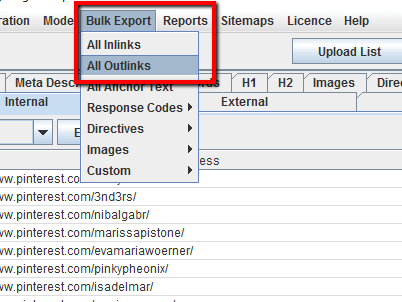Pinterest has been a rapidly growing, “good” social network for several years now. But like Reddit, it has just enough quirks that many small business marketers have not fully embraced.
What makes Pinterest very interesting to me is that, like YouTube, it has this hybrid role.
Pinterest is known as a social network, but it’s increasingly also a search engine and bookmarking service.
This 3 play opens up many unique opportunities for a creative content marketer.
It has a lot of potential to benefit your marketing efforts – here are the lessons I’ve learned helping clients use Pinterest for SEO and content marketing efforts.
Referral Traffic & Distribution
The first and most obvious way to use Pinterest is to, you guessed it, drive referral traffic back to your site with pins from your own website. It sounds simple – post pins and get your website followers to post pins.
Sidenote – Pinterest “nofollows” external links. Any links you get from Pinterest will not directly help you with Google/Bing search engine optimization.
But it goes a bit further than that. And that’s because Pinterest is simultaneously a social network and a search engine. In other words, users browse their feeds like Twitter and Facebook. But, they also do a lot of searching.
To drive referral traffic, you’ll need to get your pins in front of people. That means optimizing for both social and search within Pinterest.
The Basics of Using Pinterest
To get the most mileage from both, you’ll need to take care of Pinterest fundamentals.
- Use a business account (for the analytics)
- Verify your website & profile links
- Use the right formatting for imagery
- Use detailed descriptions
- Link the image to the relevant URL (not just your homepage)
- Use descriptive but catchy titles
Optimizing for Social Distribution
For the social aspect of Pinterest, you’re trying to get into more people’s feeds. It’s a bit like Twitter where you’re trying to get “liked” and “favorited.” You’ll need to –
- Build up a following on your own boards
- Pin lots of content that is not your own (ideally popular and really interesting stuff)
- Keep boards with a concise, niche theme
- Comment and repin to get in front of others pinners
- Collaborate with other pinners on shared boards
Some marketers use tools like TailWind to make the job easier – but you still need to come up with your own unique strategy.
Optimizing for Search Discovery
For the search aspect of Pinterest, you’re trying to rank when users are searching for specific ideas. Although you might not have the “reach” or “engagement” of the social route, ranking in search is often more valuable because users have intent – aka they know what they want. There are some excellent guides on Pinterest SEO, but in general you’ll want to –
Understand how Pinterest is organized. You can explore Topics, which are the big top level organization (ie, travel). In Google, you can explore these with site:pinterest.com/topics. How active is your main topic? What topics usually surface in your topic?

You can explore Topics – which Pinterest generates based off user boards. You can explore these in Google search with site:www.pinterest.com/topics. Add your unique keywords to find special topics.
What topics are already out there? What related topics show up?
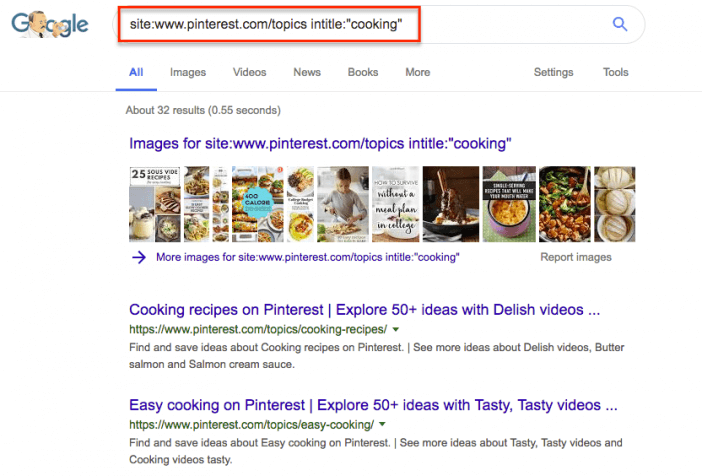
And last you can search pins from your own domain at pinterest.com/source/[yourdomain.com]. What boards is your content already pinned on?
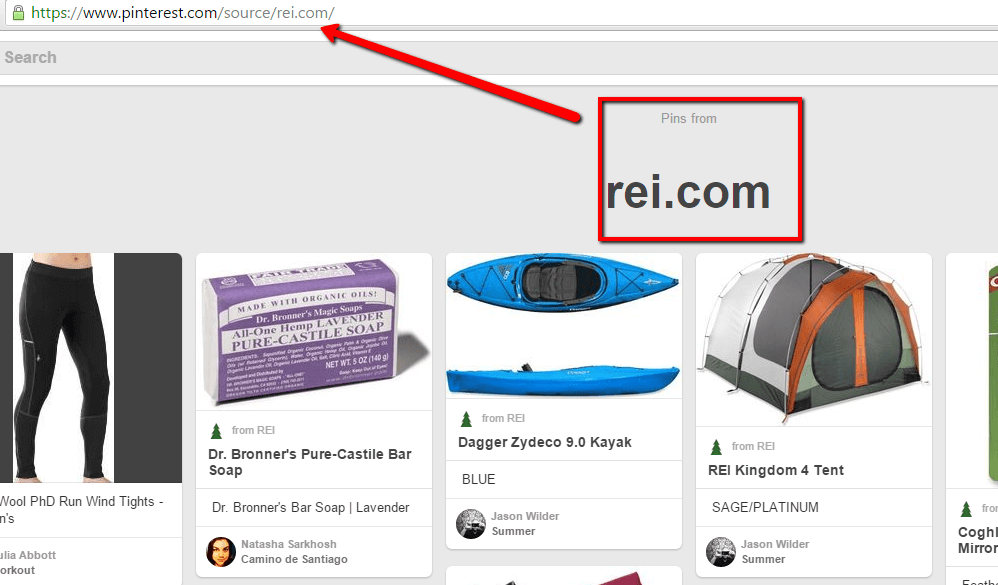
Create Boards for Brand Terms. If you have a semi-well-known brand, then you should be the one ranking for your brand terms in Pinterest. What do Pinners search for when the search your brand? If you have a small brand, what shows up for your larger competitors?
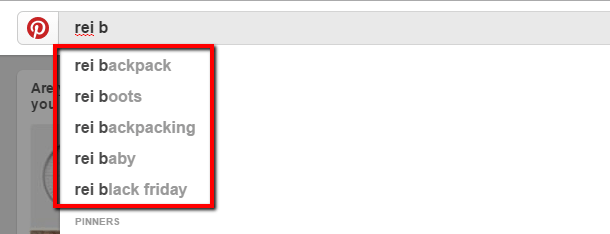
Understand the competition. Do searches – lots of searches. Look at all the most common modifiers and related searches. What pins are showing up? What boards are showing up? Do you have something better?

Use the keyword research for a search strategy. Once you’ve found a keyword niche that appears to have interest and not-too-tough competition, create tightly themed boards to match and create descriptive, well-titled pins to match.

Make sure your image’s ALT tags, Title tags and filenames are all descriptive.
The last bit of Pinterest search comes back to driving social factors. Pinterest’s ranking factors not only aren’t public, they are constantly changing. Like YouTube though, they are likely to favor pins and boards that drive engagement on Pinterest – not clicks to your website.
So once you’ve done all you can for Pinterest Search, circle back to your social strategy while watching your Analytics for whether to change your strategy or not.
Barnacle SEO in Google/Bing
Barnacles attach themselves to giant ships and travel the world without moving a muscle. In digital marketing, there’s a concept called “barnacle SEO.”
Barnacle SEO refers to websites that use other giant, websites to rank for search queries that they’d otherwise have no chance ranking for.
It’s most well-known in local search where businesses will use their Yelp, Yellow Pages or Google profile to rank for search queries. Many ecommerce companies will also use Amazon, eBay or Etsy for the same purpose.

Unlike other social networks, Pinterest emphasizes Google Search traffic. Their SEO team has one of the best case studies for Enterprise SEO in the industry. Pinterest lots of quality links and “brand equity.” And most importantly, Pinterest has a lot of keyword search intent.
In other words, many people go to Google searching for results specifically from Pinterest. And Pinterest is exactly what Google serves up in the search results.
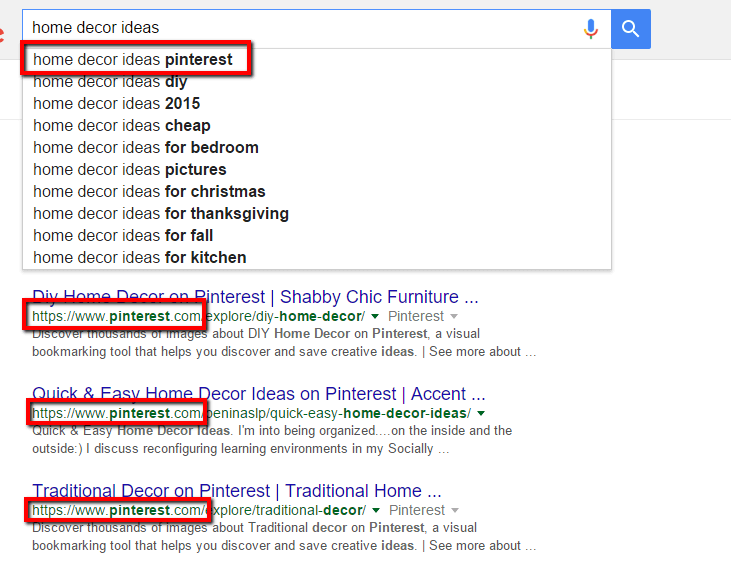
You might can see where I’m going with this.
If you are in a highly visual, research intensive industry (think fashion, furniture, decor, etc), you are more likely to rank in Google with your Pinterest page than your own website – even if you have a highly optimized website.
I implemented this strategy with one of my clients. They’re one of the largest seasonal brands in America. And yet, they were struggling to rank even for their own brand terms with their own well-known website.
In addition to creating pages on their site that targeted research-type search terms, we also created targeted Pinterest boards. We ended up ranking twice in Google – with their website and even higher with their Pinterest boards.
When you are looking for keywords to target in Google, look to see if searchers are looking for image and/or Pinterest type results. If they are, look into targeting those terms with your Pinterest boards, then use Pins on that board to funnel search traffic back to your website.
Deeper Keyword Research
Two of the toughest challenges in keyword research is thinking “laterally” and discovering user intent. In other words, what are people really looking for when they type in a keyword? And how else do they think about whatever problem they’re trying to solve?
For example, when people are looking for “cutting boards” are they trying to figure out –
- features to look for
- different types
- best choice of brands
- how to buy it
- how to use it
- what on earth it is
- if there are better options
- safety considerations
- pictures of music-related cutting boards
- stuff to use with cutting boards
- or something completely different?
Tools like Google Suggest, AnswerThePublic and KeywordTool.io are helpful here.
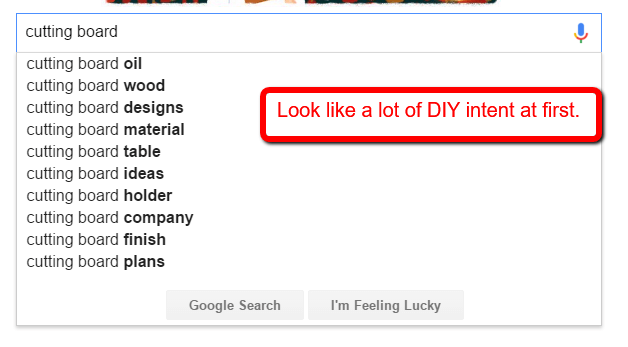
And once you’ve figured that out – how do you find “lateral” terms – search terms that are closely related, but very different? To keep with the cutting board example – how do you make the leap to “Butcher’s Block?”
Tactics like hacking Keyword Planner with Wikipedia pages can help with this.
But for many industries, Pinterest is an amazing way to solve both these problems.
Pinterest has a search suggest function. Like Google, it uses real user data to try to predict what you’re looking for. Type your keyword and don’t hit enter. Look at the top modifiers.

Type letter and don’t hit enter. Look at the variations.

Now the coolest functionality. Type your main keyword and search. Pinterest will show the top topics for your target keyword (click image to see full version).
Additionally, you can take this same tactic over to Google. Just add the “pinterest” modifier. This is useful for not only targeting keywords with a Pinterest board, but also for understanding what format your content should be in.
If your target content idea has a “Pinterest” modifier in Google…it should be visual content, not text. And it should be on Pinterest.
But what about those lateral keywords? There’s a couple other techniques you can do there.
First, you need to find the main Pinterest topics or boards for your keyword. The ones that Google is most in love with. Go to Google and use this query – site:www.pinterest.com “your keyword”
That will show you the most relevant pages in Google for that query.
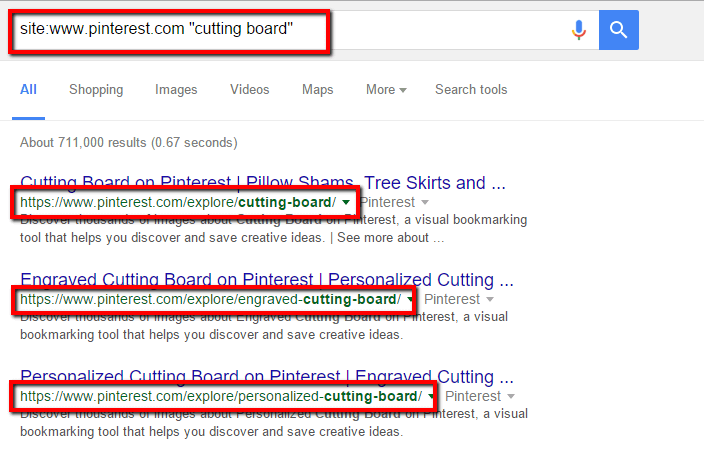
Now we need to see what terms search engines associate with that page. Start with Google Ads Keyword Planner. Drop the most relevant Pinterest URL into the landing page section of “Search for New Keywords.” Hit the Get Ideas button. See what Google tells you.
Next, if you have a subscription to Ahrefs, you can do a reverse analysis of what keywords that URL is ranking for in Google.
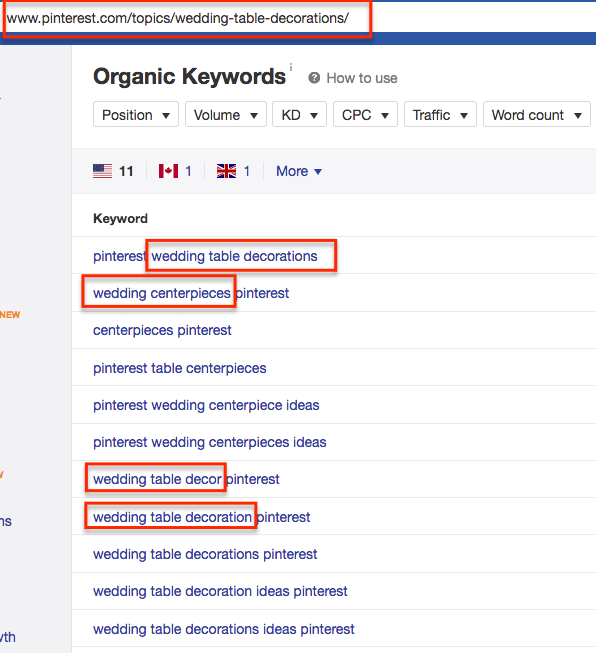
Like I wrote about in my Ahrefs Guide, these keywords will be different from what you find in AdWords Keyword Planner since Ahrefs’ data comes from actual search results. Take the data and complement the rest of your keyword research.
Build Off Top Performing Content
Since it’s a social network, Pinterest’s users help surface the most popular content. And unlike Google, which has to use links and other signals to approximate “authority” and relevance, Pinterest’s data will show straight up what’s the most popular content overall or based on keywords or dates.
This is valuable because you can build off what already works. You’re using Pinterest’s data to tell you what types of content are already popular so that you can build better and/or complementary content. Or you can take lessons in one vertical and apply it to yours (“oh, this type of image worked in fashion, so I’m going to try it for my gardening website”).
If you have developer resources at hand, you can pull from Pinterest’s API. But it’s easier to use either Ahrefs or BuzzSumo. Both allow you to search content by topic and/or date, then sort by number of pins.
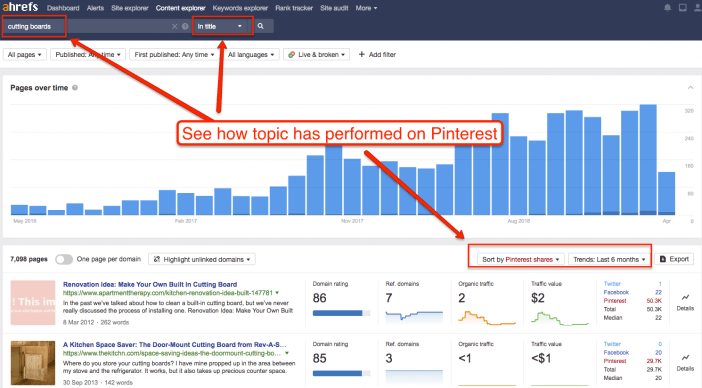
If you are looking for best practices or ideas, this is where to look. BuzzSumo offers a free-trial and both have monthly options if you are building out your content strategy now.
Reverse Engineer Links
If you are going to succeed in Google/Bing, you’re going to need links. But like content, you can often find the best opportunities by reverse engineering success.
With Pinterest, you can use a couple techniques.
First, take the top performing content that I mentioned in the previous section, but pull the links (not shares) to that content. You’re essentially applying a double-filter to Ahrefs and BuzzSumo. Sort by Pinterest pins to find top visual content, then export all the websites that are linking to that content.

When you create something complementary and/or better, you have a pre-qualified list to manually promote via email.
Second, you can take either a relevant Pinterest tag URL or you can just drop pinterest.com/topics* into Ahrefs’ Site Explorer.
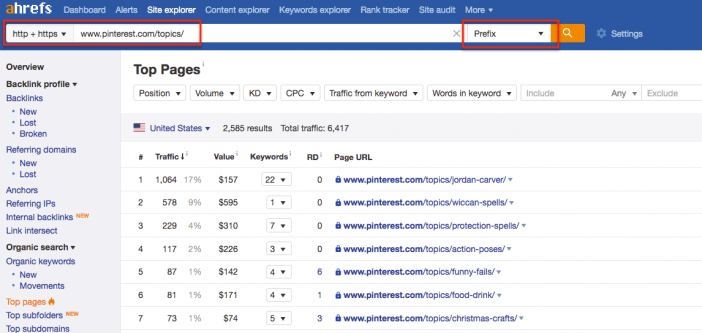
Side note – if you drop in Pinterest.com, you’ll get every single site linking to their Pinterest profile, so you’ll need to find some way to direct Ahrefs. Use the Prefix option with a specific Pinterest URL path.
Now the goal here is to sift, sort and filter URLs by potential. Even with searching specific directories in Pinterest, you’ll cast quite a wide net, so you’ll need to figure out how to narrow it down into something usable. How you sort will depend on your goals and website.
However, here’s a few of my favorite ways to sift, sort and filter –
- Sort referring domains by top level domain, domain type and keyword in URL.
- Sort links with URL containing a footprint keyword – think “resources”, “review”, “favorite, or “idea” then apply Domain Rank (DR) to sort priority.
- Sort only by New Links – you’ll get the active linking websites.
- Sort by Anchor and search for keyword.
Beyond that – you’ll just have to use your imagination and learn based on what comes up.
Whatever you find will be pre-qualified because they are linking from their website to a relevant Pinterest page.
Broken Link Building
Broken link building is a slow but steady way to get links to your website. When you find a piece of content that has gone away, you can rebuild it knowing that it is something that has already succeeded, and has a very simple offer to get links to it.
The challenge, though, is finding good content that is now dead/broken. The most efficient way to find broken links is to go to a big website that you know for sure has a lot of broken links.
And Pinterest has a lot of broken links – like upwards of 50% of all submissions. Pinterest’s team is working on fixing them algorithmically, but there are still so many good resources that do not have a home.
Finding broken links on Pinterest is a bit challenging due to how it loads content (a normal crawler like Screaming Frog has lot of trouble). So here’s a couple workarounds to dig up those dead resources.
First, you can use Ahrefs’ Broken Outbound Links function. Use the same technique that I mentioned for reverse engineering links – use an exact board URL, or use an /topics/ prefix. Once Ahrefs loads the data, click on Broken Outbound Links.

The trouble with this technique is that Ahrefs serves a very limited scope of what’s out there. You’ll also have to sort through a lot of noise in Excel (ie, irrelevant content and 500 errors, which might just be slow websites, not dead websites).
Second, you can use a more targeted technique. Go grab the Chrome extension Check My Links – it’s a standard piece of an SEO’s toolkit.
Next, we’ll have to tweak the tool. So open up the options.
Under “Exclude Links from These Domains” – add pinterest.com which will keep the tool from crawling all the internal links on your Pinterest page.
At the bottom, check the box to allow the tool to follow “rel=nofollow” links. Pinterest “nofollows” all external links, which tells bots to not crawl that link. This instruction tells our little bot to disobey that instruction and check the status of the external website.
Next, do a relevant search, navigate to a board, or find a relevant tag. Scroll down the page so that Pinterest loads up 50 to 100 pins.
Click the Check My Links button and let your bot do its magic. Any links that are broken/dead will show up as red.
Rinse & repeat on various searches, boards and tags to find the piece of broken content. Then shift over and follow my broken link building guide.
Pro tip – don’t forget to add /likes/ and /repins/ to the end of the broken pin’s URL structure. You can get a list of everyone that has liked or repinned it.
Building & Researching Outreach Prospects
Aside – before you read further, please note that scraping data is not allowed under Pinterest’s (and others’) Terms of Service. You could get banned from Pinterest for breaking their Terms of Service. What you do with this information is up to you.
2nd aside – hat tip to James Flacks for his concise post on Reddit that helped me make my approach to this tactic much simpler. Read that post here.
When you are sharing and promoting your website, it helps to know who are your “warm” prospects. Marketers always should start with building out personas. But the creepiness transparency of the digital world allows you to go well-beyond some educated guess.
Pinterest is a very open platform. You can see (most) everything that everyone else is doing. And pinners are (justifiably) proud of their boards, tastes, followers and those that they follow.
If you want to gather a giant list of people who are interested in your product/content, you can get it from Pinterest. We’re going to use 3 steps.
First, find a company, an influential pinner, or a popular pin that relates to the audience you want to get in front of. Here’s a few URL structures –
For companies, websites & popular users –
- https://www.pinterest.com/[username]/
- https://www.pinterest.com/source/[domain]
- https://www.pinterest.com/pin/[unique pin number]/
Second, we need to display a list of the users that follow the company/user or like/repin a popular pin. Here’s the URL structures that you’re looking for.
- https://www.pinterest.com/[username]/followers/
- https://www.pinterest.com/source/blacksheepwools.com
- https://www.pinterest.com/pin/[unique pin number]/likes/
- https://www.pinterest.com/pin/[unique pin number]/repins/
You dig up popular users via keyword search.
And also get lists of board followers by clicking on “followers”.

Whatever route you take, you are looking at lists of people that have shown very specific interest in something. But now we need to grab their data quickly.
Get another Chrome extension called Scraper for Chrome.
Go to the list that is most relevant to you. Scroll down to load everything up. Right click on a user’s link and Scrape Similar.
For scraping followers, use //div[@class=’Grid Module’]/div/div for the Xpath and .//a/@href as the column setting.
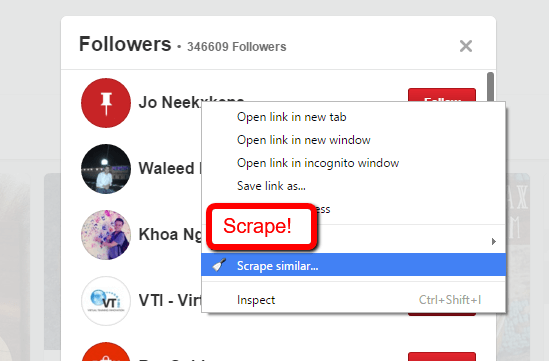
For scraping pin sharers, use //div/div/div/div[4]/div/a for the Xpath and columns set as @href
Now, export that list to a spreadsheet program. Clean up the list so that you have the user’s profile URL (https://www.pinterest.com/[username].
Third, we’re going to take that list of Pinterest users and put them in a crawler program like Screaming Frog and get this data –
Turn Screaming Frog to List Mode. Paste your list of users. Run the crawl. Export All Outlinks.
Clean up your spreadsheet so that you have things like those users’ Twitter, Facebook & other social profiles. If you’re lucky, you’ll also get a few website owners.
Now, take that data and be useful. Do not be spammy or act like some weirdo. It’s creepy enough that you have all this data.
Use the data to learn more about your potential fans. Follow them on Twitter, find out what stuff they share, learn more about what you can do to be more useful.
Retargeting Audiences & Amplification
That said – there is a way to use your scraped data in a socially acceptable creepy way and help your content marketing. That is, buy some very targeted ads.
*Note – you will be breaking some more terms of service here. Facebook, Twitter and Google all require some sort of user consent before uploading user data. Use this tactic with your own judgement.
Facebook’s custom audience option allows you upload a list of Facebook users to run ads against. Twitter’s Tailored Audiences does the same thing. And Google’s Display Network has similar options for targeting website URLs.
Take your list of Facebook usernames, Twitter handles and websites, upload the lists and run targeted ads to promote / amplify your content.
Again, that’s in a grayish area for Facebook and Twitter’s programs, especially if you are just scraping your own Pinterest followers. But it’s also very effective.
Next Steps
Even if you aren’t an active pinner, Pinterest offers an incredible, open platform to learn more about your audience.
Start with building out a proper, branded, verified business profile. Make sure your website’s imagery takes Pinterest into consideration – use the right ALT tags, filenames, and formatting. Then go explore Pinterest and see what you can learn and apply to your SEO and content marketing strategy.
Check out PinGroupie as a free tool to help sort & search boards within Pinterest. To Pin efficiently, check out Tailwind to save tons of time while still Pinning the right stuff at the right time.
Be sure to explore the full list of Free Tools To Find Prequalified Content Ideas!
